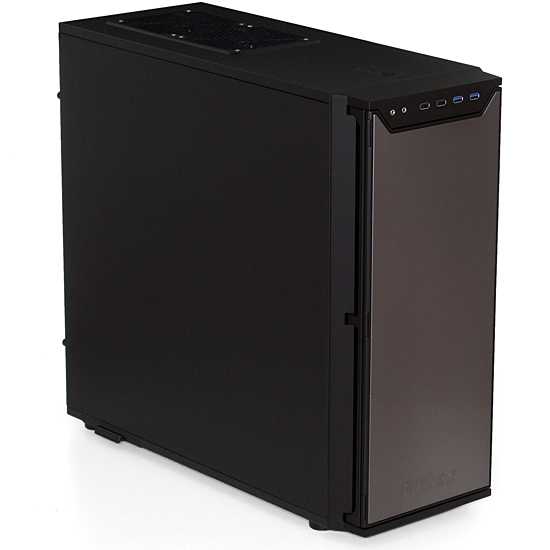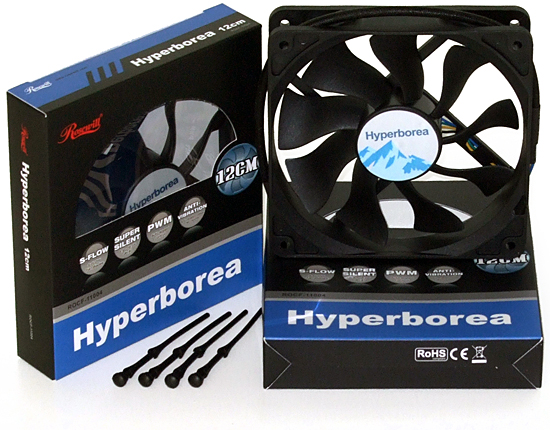System Builder Marathon, March 2012: $2600 Performance PC
Case And Case Cooling
Case: Antec P280
Several of our ideas about ideal case design came into conflict for this particular build. First, we wanted something with a high-quality finish, such as anodized aluminum, to hint at the quality of the parts inside. But we also wanted something quiet, since noise can ruin the ownership experience. Moreover, I wanted a case that would look equally good on top or next to a desk.
At first I considered adding damping material to one of my favorite Lian-Li designs. That went out the window, though, when I realized that all of the cases in mind required USB 3.0 loop-back cables protruding haphazardly from the back. Cooler Master’s ATCS 840 is no longer available. And SilverStone’s Fortress 2 is really too long to put on most desks.
Read Customer Reviews of Antec's P280
Antec’s $140 P280 was finally chosen mostly for its layout and features, but partly because its aluminum panel lends a slightly dressed-up appearance. Thick steel side panels and an acoustic foam liner in the drive bay door keep much of the noise from graphics cards where it belongs (inside the case). Front-panel ports near the top edge ease access from either low or high relative positions, and a dual-intake triple-exhaust design assures us that proper cooling would be at our discretion.
Additional Case Cooling: Rosewill ROCF-11004 Cooling Fans
We bring up proper cooling because the P280 doesn’t include intake fans. Given the massive sucking power of the Radeon HD 7970’s intake, coupled with lots of airflow from Zalman’s CNPS12X, we didn’t even know if intake fans would really be required. But we didn’t build this machine to merely match a list of minimum requirements. We wanted it to excel at overclocking.
Read Customer Reviews of Rosewill's ROCF-11004 Fans
Rather than drop big bucks on a famous name, we began reading user reviews to find the best cooling-to-noise ratio for the price. Rosewill’s Hyperborea fans rely on hydro dynamic bearings to reduce noise, offering a rated 57.53 CFM at 16.05 decibels in open air. Two buyers indicated that these ratings weren’t too unrealistic, and a price of only $9.26 per fan was low enough to convince us to give them a try.
Unfortunately, the distance between Antec’s intake fan mounts and Asus’ motherboard connectors was far too long for typical fan leads. Rather than buy two four-pin extenders, we decided to give one four-pin splitter a try at half the price. Our ammeter shows a maximum of 310 mA start-up current and 2 W continuous power consumption at full-speed for both fans combined, and the power meter on our wall jack concurs.
Current page: Case And Case Cooling
Prev Page SSD, Hard Drive, And Optical Drive Next Page Hardware InstallationGet Tom's Hardware's best news and in-depth reviews, straight to your inbox.
-
llguitargr8 Just curious, did you guys purchase all these parts and right these articles before the GTX 680 was released? I really thought you guys would have gone with that, and if it wasn't because they weren't available at the time, then what makes the 7970 better in your opinion?Reply -
g-unit1111 Not sure if I agree with that choice of cooler but I definitely like the rest of the setup!Reply -
bystander llguitargr8Just curious, did you guys purchase all these parts and right these articles before the GTX 680 was released? I really thought you guys would have gone with that, and if it wasn't because they weren't available at the time, then what makes the 7970 better in your opinion?Almost all these build articles are based on purchases that took place 2 months ago. Even if they were to have bought these parts today, it would be hard to purchase a 680, as stock is a major issue.Reply -
esrever I like the build except the x79 adds like $500 extra that I see very little benefit from.Reply -
e56imfg Dang I need to win this one!! I'm so happy they balanced the CPU with the GPU this time around.Reply -
hmp_goose Good job: Working through the details of the CPU cooler like that is half the fun of this hobby. Great build.Reply -
theuniquegamer Good build . But there could be more improvement by replacing a $600 cpu and $320 mother board with a i7 2600k and a $200 z68 mother board . And also replacing the 7970($590) with 2x680 at 2x$500(from the money saved from cpu and motherboard and 7970). It may give better gaming result than this build.Reply






